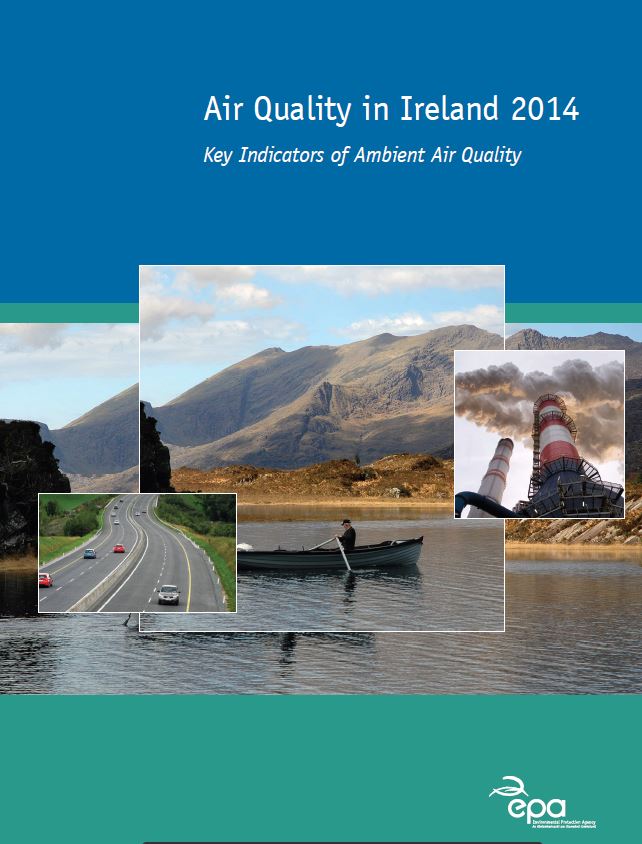Air Quality in Ireland 2014
Key Indicators of Ambient Air Quality.
Summary: Ambient air quality trends based on concentration measurements in 2014 of particulate matter, sulphur dioxide, nitrogen oxides, black smoke, heavy metals, ozone, polycyclic aromatic hydrocarbons, carbon monoxide and benzene.

Executive Summary
Ireland's air quality in 2014
•Air monitoring data from 33 stations in the National Ambient Air Quality Monitoring Network was assessed against legislative limit and target values for the protection of human health and vegetation
•Air monitoring data was also compared to the much more stringent World Health Organistation (WHO) guideline values and EEA estimated reference level
•No levels above the EU limit value were recorded at any of the ambient air quality network monitoring sites in Ireland in 2014
•WHO guideline values were exceeded as follows:
• Ozone at 8 monitoring sites
• Particulate Matter PM10 at 2 monitoring sites
• Particulate Matter PM2.5 at 2 moniotoring sites
•EEA reference levels were exceeded as follows
• PAH at 4 monitoring sites
•Irelands air quality relative to our European counterparts is of good quality
•Icelandic Volcano impacts on Irish Air - The Bardarbunga volcanic eruption led to elevated concentrations of sulphur dioxide being observed over Ireland for a short period in September 2014
•Transboundary air pollution episode, April 2014 - a particulate matter pollution episode (originating in Eastern Europe) impacted North Western Europe and Ireland in April 2014
•Licensed facility fire in Dublin, January 2014 (at the Oxigen waste management facility in Ballymount, Dublin City)
Current and future challenges
•Solid fuel use - Comparison with WHO guideline values for particulates and EEA estimated reference level for PAH show the need for progress with regard to reducing levels . Essential to the goal of improving our air quality will be a shift for the Irish consumer from solid fuel to cleaner fuel alternatives and awareness of the impact our choice of fuel for home heating has on the air quality of our locality
•Transport - Increasing road transport will lead to an increase in NO2 levels, particularily as our economy continues to recover. In the short term, efficent traffic management coupled with environmentally sound consumer choice of transport mode and fuel is needed to minimise emissions. In the longer term, more choices in terms of public transport are needed in towns and cities
•Transboundary ozone - Irelands air mass is subject to transboundary impacts of pollutants , in particular ozone. To tackle this problem, an integrated, European wide approach is needed to reduce the levels of ozone precursor compounds in our air